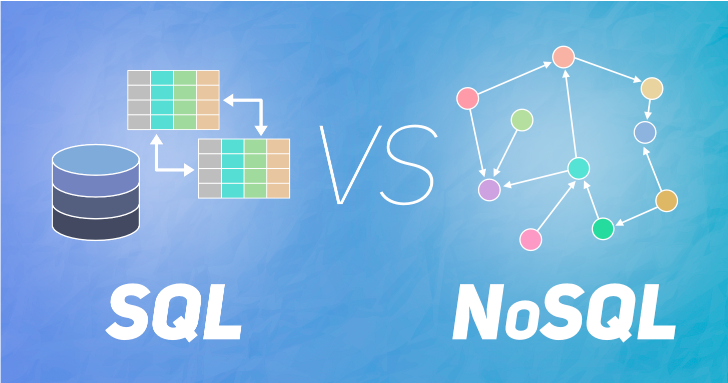Web development has come a long way since the early days when it was all about HTML and CSS. Today, web applications are becoming more complex, with increased interactivity and functionality. This has led to the emergence of server-side programming and back-end development.
Back-end development is the part of web development that is responsible for the server-side of web applications. It involves writing code that runs on the web server and interacts with the client-side code to deliver dynamic and interactive web pages.
Server-side programming is an essential aspect of back-end development. It involves writing code that runs on the server to generate dynamic web pages, interact with databases, and provide other functionality that is not possible with client-side programming alone.
This article will introduce you to the basics of server-side programming and back-end development in web development. We will explore the role of server-side programming in building web applications and dive into the fundamental concepts that form the foundation of back-end development.
Key Takeaways:
- Server-side programming is a crucial part of back-end development in web development.
- Server-side programming involves writing code that runs on the server to generate dynamic web pages and provide other functionality.
- Back-end development is responsible for the server-side of web applications.
- Understanding server-side programming and back-end development is crucial for developing robust and scalable web applications.
- Server-side programming and client-side programming work together to create dynamic and interactive web applications.
Understanding Server-Side Programming
Welcome to our in-depth exploration of server-side programming! In this section, we’ll be discussing important concepts like server-side scripting, backend programming, and server-side languages. Let’s get started!
Server-side programming is a crucial component of web development. It involves writing code that runs on the server-side of an application and is responsible for handling tasks like data storage, processing user input, and managing application logic. This is in contrast to client-side programming, which runs on the user’s browser and handles tasks like creating dynamic user interfaces and handling user interactions.
One of the key concepts in server-side programming is server-side scripting. This involves writing code that can be executed on the server-side of an application, typically in response to a request from a client. This can include tasks like generating dynamic HTML pages or processing form data.
Backend Programming Languages
There are many different programming languages that can be used for server-side development. Some of the most popular languages include:
– PHP
– Python
– Ruby
– Java
– C#
Each of these languages has its own unique strengths and weaknesses, making them better suited for certain types of applications.
When selecting a language for server-side development, it’s important to consider factors like performance, scalability, and maintainability. You’ll also want to ensure that the language you choose is well-supported and has a large community of developers.
Conclusion
By now, you should have a better understanding of server-side programming, including concepts like server-side scripting, backend programming, and server-side languages. Keep in mind that this is just the tip of the iceberg when it comes to back-end development, but understanding these concepts is a crucial first step in building robust and scalable web applications.
The Relationship Between Server-Side and Client-Side Programming
In web development, back-end and front-end development go hand in hand. Back-end development, also known as server-side programming, involves writing code that runs on the server and handles tasks such as database management, authentication, and processing user input. On the other hand, front-end development, or client-side programming, refers to writing code that runs on the user’s device, typically a web browser, and handles tasks such as rendering the user interface and handling user interactions.
While back-end and front-end development are distinct disciplines, they work together to create dynamic and interactive web applications. Back-end developers create APIs (application programming interfaces) that allow front-end developers to interact with the server and access the necessary data. Front-end developers use this data to create a user interface that users can interact with, such as forms, buttons, and other interactive elements.
By collaborating effectively, back-end and front-end developers can create seamless web applications that deliver a positive user experience. This involves understanding how the two disciplines interact and identifying areas where they can work together to optimize performance and functionality.

In conclusion, incorporating server-side frameworks and technologies into your back-end development workflow can provide significant benefits for web application development. By choosing a suitable framework or technology for your project, you can streamline the development process, increase scalability, and enhance the performance of your web applications.
Conclusion
In conclusion, we hope this introduction to server-side programming has inspired you to explore the world of back-end development. As we’ve discussed, server-side programming is a crucial aspect of web development, and understanding the basics is essential for building robust and scalable web applications.
By leveraging the power of server-side programming, you can design and maintain web servers, databases, and applications that meet the demands of modern websites and applications.
As you begin your journey into the world of back-end development, remember to stay curious and keep learning. With dedication and effort, you can take your coding skills to the next level and become a skilled server-side programmer.
Thank you for reading this article. We hope you found it informative and insightful. Happy coding!
FAQ
What is server-side programming?
Server-side programming refers to the execution of code on the server that powers a website or web application. It involves writing scripts or programs that handle the processing and logic required to generate dynamic content and interact with databases and other server resources.
What is the role of server-side programming in web development?
Server-side programming is essential in web development as it enables the creation of dynamic and interactive web applications. It allows for the processing of user input, the retrieval and storage of data, and the generation of personalized content based on various factors such as user preferences or logged-in status.
What are some commonly used server-side programming languages?
Some commonly used server-side programming languages include PHP, Python, Ruby, Java, and Node.js. Each language has its own strengths and areas of application, and the choice of language often depends on factors such as the project requirements, developer familiarity, and performance considerations.
What is the relationship between server-side and client-side programming?
Server-side programming and client-side programming work together to create fully functional web applications. Server-side programming handles the server-side logic, data processing, and database interactions, while client-side programming focuses on the user interface and interactions within the web browser. Both front-end and back-end development are essential for building modern web applications.
What are some popular server-side frameworks and technologies?
There are several popular server-side frameworks and technologies available for web application development. Some examples include Ruby on Rails, Django (Python), Express.js (Node.js), and Laravel (PHP). These frameworks provide pre-built components and tools that streamline the development process and help developers build scalable and efficient server-side code.



Pingback: The Role of a Full-Stack Developer in Modern Web Development
Pingback: Unlocking Success: The Number 01 Vital Role of a Full Stack Developer in Contemporary Web Development